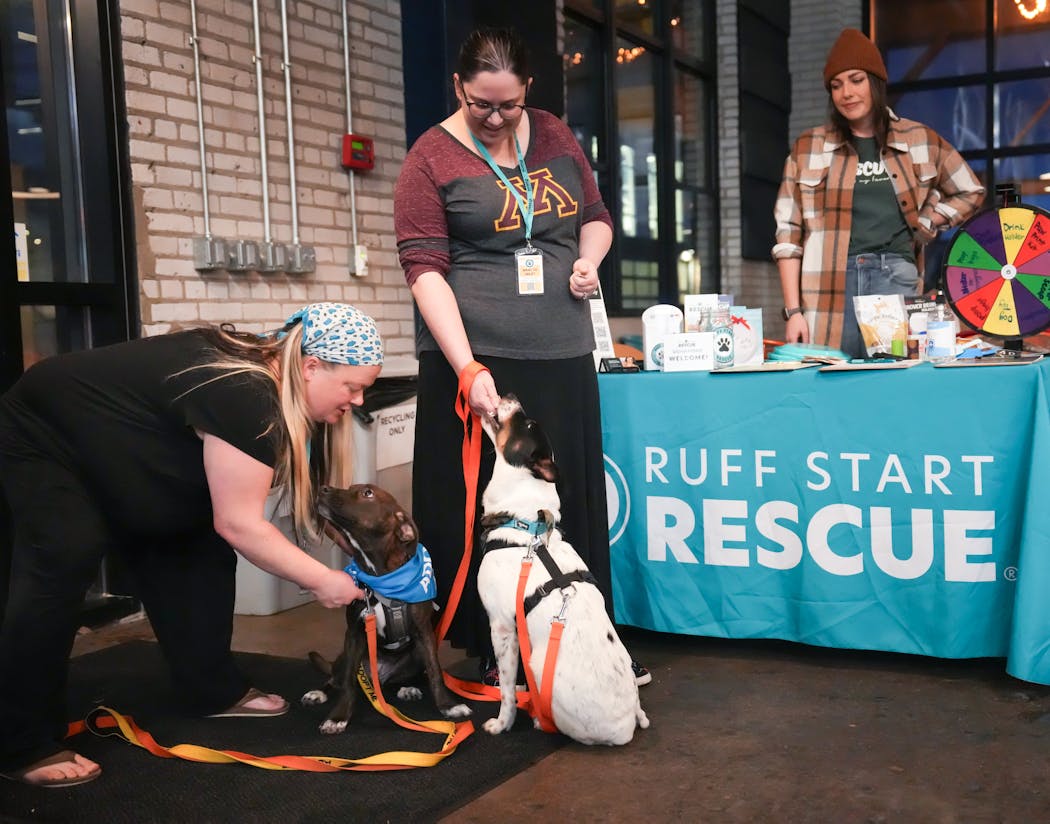Thursday is the biggest fundraising day of the year for many Minnesota nonprofits, but a growing number of organizations are worried that fewer donors will step up.
Across the state and nation, charitable giving is declining as donor fatigue sets in after the unprecedented generosity of the past few years amid the pandemic. Donors also have found their disposable income eroded by rising expenses, an issue also facing many nonprofits.
That's why more of them are rallying for extra help this week during the 15th annual Give to the Max Day and for the entire year-end period, a critical time for nonprofits to drum up donations.
"This is when you're going to really know how individual trends are shaking out. We know Minnesota is a generous state ... but the trends are a little bit concerning," said Sophia Lenarz-Coy, executive director of the Food Group, one of seven food banks in the state. "We're hoping to stay flat [in donations] this holiday season, but even that's a stretch."
In 2022, total giving by U.S. corporations, foundations and individuals declined for only the fourth time in four decades, according to Giving USA's report released earlier this year. Giving by individuals slid by 6.4% from the year before, with stagnant incomes, rising inflation and stock market decreases being blamed.
Individual Minnesotans donated $5.3 billion in 2022 — close to pre-pandemic levels and a 6.4% drop from 2021, according to the Minnesota Council on Foundations.
"People are so great at mobilizing when there's a clear crisis," Lenarz-Coy said. "But donor fatigue is a real thing."
Last year, Minnesotans bucked those broader trends on Give to the Max Day, the annual statewide "giving holiday" that collects donations for thousands of nonprofits and schools. Donors gave $34.1 million, just shy of 2021's record $34.4 million.
How could Give to the Max Day be largely immune from the broader declines in philanthropy? Jake Blumberg, executive director of GiveMN, which puts on Give to the Max Day, said it might be because GiveMN's grassroots campaign is driven by smaller donations that people are able to sustain even when the economy wavers — even as larger donations slip. The average donation for Give to the Max Day is usually about $100.
"Donors continue to want to give to organizations through the broad civic celebration that is Give to the Max Day," he said. "It takes hold of the state."
Though Give to the Max Day is pegged as a 24-hour fundraiser, it includes all donations made to givemn.org since Nov. 1. So far, Blumberg said this year's donations are on pace with the early giving in each of the last three years, surpassing pre-pandemic levels. Give to the Max Day drew $21.6 million in 2019, but has exceeded $30 million each year since then.
"Our giving since 2020 really established a new floor," he said. "We remain optimistic that what we've seen the past couple years ... is a new possibility for the campaign. Giving could go up, giving could go down. Guess who gets to make that choice? The donors."
Facing 'financial COVID cliff'
In a survey released this fall by the Minnesota Council of Nonprofits, 70% of nearly 200 nonprofits said they've increased fundraising efforts in the last year. Still, a third of respondents reported that donations and foundation grants have declined this year — the highest number since the statewide association started tracking the data in 2020.
As a result, more nonprofits are hurling toward a "financial COVID cliff," according to the survey, with nearly 60% of respondents saying their organizations will face financial distress within a year.
The Food Group in New Hope was considering budget cuts, including scaling back the amount of free food it distributes, until a surprise grant helped it stave off a financial crisis.
"We're not feeling like we're in that cliff crisis point that some other organizations are feeling, but certainly holding our breath ... for a strong holiday campaign," Lenarz-Coy said.
Though Give to the Max Day is the Food Group's biggest one-day fundraiser, she said it's been harder to capture donors' attention. "Give to the Max Day is a million asks from a million great causes," she said.
In St. Louis Park, Derek Burrows Reise has been forced to fundraise more aggressively after a drop in donations, especially from millennials and Gen Z donors grappling with student loans and high housing or child-care costs. Give to the Max Day is the biggest fundraiser of the year for the St. Louis Park Emergency Program (STEP), which aims to raise $200,000 in the campaign, or 15% of its annual budget.
"Give to the Max Day is such a powerful and valuable time for nonprofits in Minnesota," Burrows Reise said. "But I'd also ask people to remember that the needs for nonprofits are year-round."
STEP, which operates a food shelf and other services, blew through half its food budget in three months because of rising costs and the growing number of Minnesotans in need. As a result, Burrows Reise said STEP may have to make cuts or nix pay raises for its 14 employees — which would make the nonprofit less competitive in a tight job market.
"The community can't afford for us to close our doors," he said. "We have to manage a way to survive."
Nonprofits tap breweries for new donors
Some organizations are trying new ways to catch donors' attention. In Brooklyn Park, CAPI is holding a fundraiser Thursday at La Doña Cervecería Brewery as part of its Give to the Max pitch to raise $10,000 — tapping into a trend of nonprofits using brewery events to reach another audience.
The nonprofit provides culturally specific foods and other resources to a growing number of immigrants and refugees. But with rising costs, Paul Andrighetti, CAPI's development director, said the organization needs to diversify its revenue and draw new donors who want to give non-cash assets, such as stocks or cryptocurrency.
Ruff Start Rescue, a foster-based animal rescue in Princeton, Minn., is organizing several events at breweries leading up to Give to the Max Day rather than having one big event, hoping to broaden its reach to new donors.
This year, with donors giving less overall and fewer people using Facebook to see their appeals, Azure Davis, Ruff Start's executive director, said it's taking extra work to fundraise. Normally she increases her goal each year on Give to the Max Day, but this year, she kept it level at $175,000.
"It is our largest fundraiser of the year and ultimately decides what we can do in 2024," she said. "We're just having to do more work to get donations. For us, it's going to be a really telling time."
Brooklyn Park police make arrest after asking for help in search for man suspected of sexual assault at gunpoint

Attorney Tayler Rahm wins GOP backing in battleground Second District
North Oaks withdraws request for density exemption from Met Council



